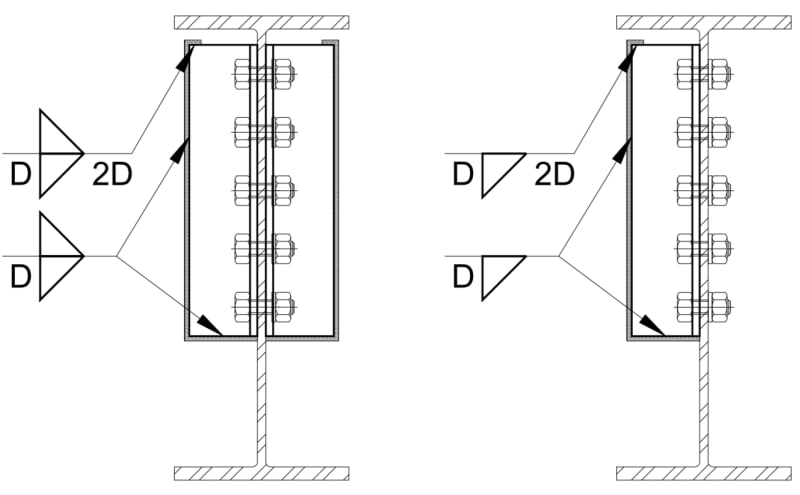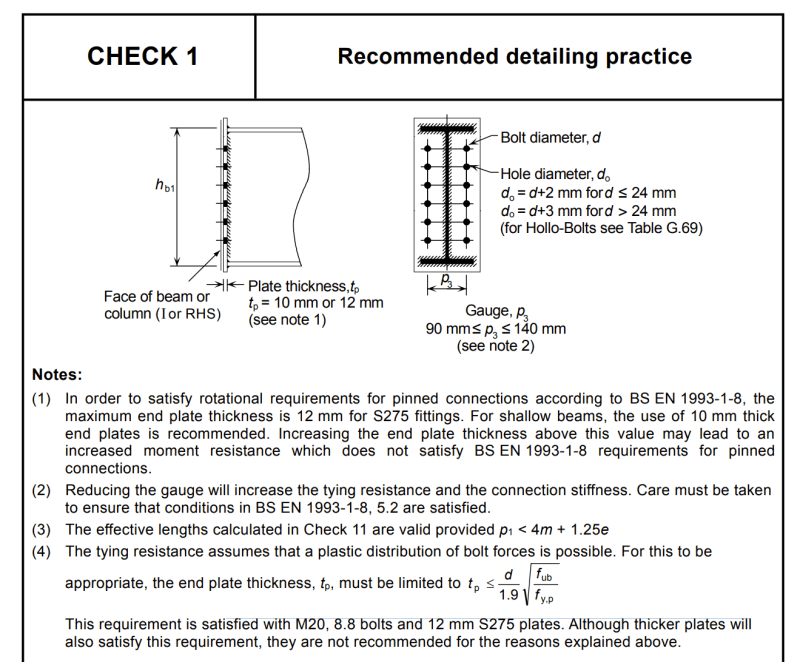Hello,
I am reading the book SCI P358 Green book - Simple steel connections.
On page 84 - Recommended detailing practice on end plate connections, it is mentioned that the end plate should not be thicker than:
t_p < (d / 1.9) * SQRT(f_ub / f_yp)
where d is the diameter of the bolt hole, f_ub the ultimate strength of the bolt and f_yp the yield strength of the plate steel grade.
The book mentions that this condition should be fulfilled to ensure that plastic distribution of bolt forces is possible for the tying resistance of the connection.
Would anybody have some source or explanation where this condition comes from? I cannot see any intuitive interpretation of the formula, and I would like to have some intuition on what does the fulfilment of this condition mean, and what are the implications if the condition is not fulfilled.
Thank you.
I am reading the book SCI P358 Green book - Simple steel connections.
On page 84 - Recommended detailing practice on end plate connections, it is mentioned that the end plate should not be thicker than:
t_p < (d / 1.9) * SQRT(f_ub / f_yp)
where d is the diameter of the bolt hole, f_ub the ultimate strength of the bolt and f_yp the yield strength of the plate steel grade.
The book mentions that this condition should be fulfilled to ensure that plastic distribution of bolt forces is possible for the tying resistance of the connection.
Would anybody have some source or explanation where this condition comes from? I cannot see any intuitive interpretation of the formula, and I would like to have some intuition on what does the fulfilment of this condition mean, and what are the implications if the condition is not fulfilled.
Thank you.


